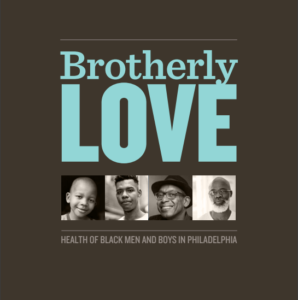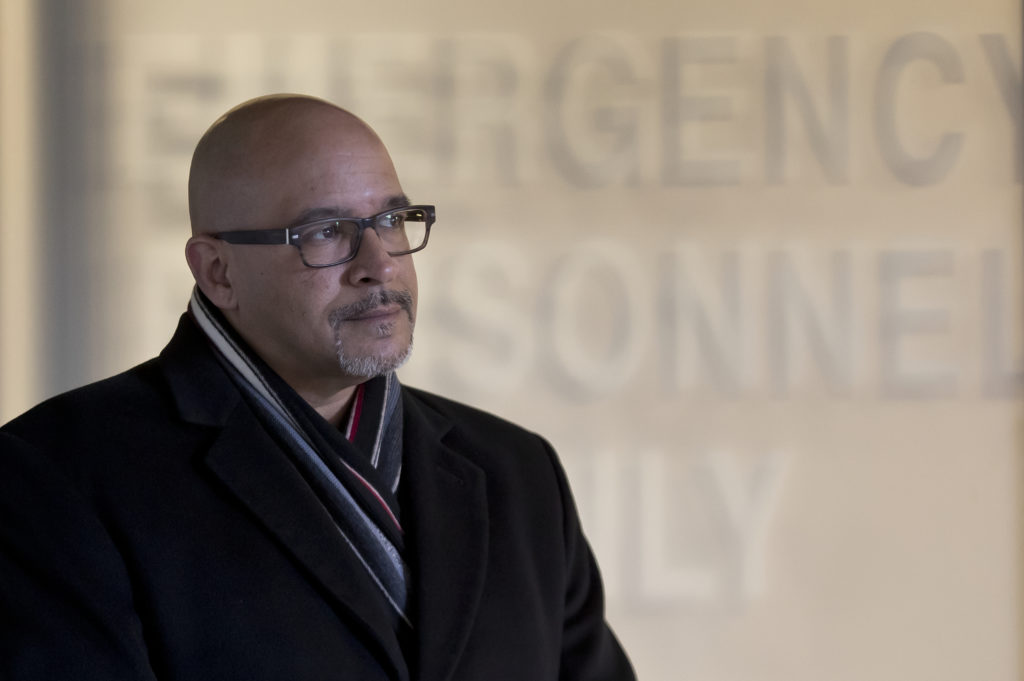The life-threatening stress of being Black and male in Philadelphia
 May 6, 2019
Category: Featured, Long, Purpose
May 6, 2019
Category: Featured, Long, Purpose
Anytime Edwin Desamour meets up with old friends, it’s a trip down memory lane. But, says the father of four and dean at John B. Stetson Charter, it’s almost bittersweet — because they look at each other in wonder that they all are still around to meet.
“On top of health and everything else, look at the violence. It’s something that’s real and I think that no one is looking at themselves as living that long,” Desamour said.
Desamour was born and raised in what he calls the “Goodlands.” Part of the Kensington-Fairhill section of the city that is commonly referred to as the “Badlands”, Desamour is not a fan of the nickname. There are good people still residing there, he said.
When Desamour was 16 years old, he was convicted of third degree murder, and spent more than eight years in prison. For the past 20 years, Desamour has been trying to be the person that he never had growing up — someone that old and young can identify with. He spends his time working on various projects and with nonprofits, such as Congreso and the Youth Sentencing and Reentry Project.
“I’m going to be 47 in June and it’s like folks are amazed that you made it that far,” he said. “I’m still young, there’s still life to live. But I work with a lot of young folk out here and one of the saddest things that I have to experience is losing them to the streets.”
No one can deny that gun violence is an ongoing problem in Philadelphia. Nearly everyday a new name is added to a very long list of people who have been lost to violence. And at times, it seems that the faces appearing on screen as victims of that violence get younger and younger.
Earlier this year, a report titled Brotherly Love: Health of Black Men and Boys in Philadelphia was released by the city’s Office of Public Engagement. Among the positives of the report: how low the rate of obesity is in young Black men. Among the negatives: Black men have the lowest life expectancy of any group in the city.
Factors such as poverty, economic and educational disadvantage and adverse childhood experiences usually come into play, but there are many contributing issues that could be listed. According to the report, however, “poorer life expectancy among Black men is largely driven by more premature death from homicides…”
Homicide is the leading cause of death for young Black men ages 15 to 34, according to the report.
“And when you look at, for instance, young Black men between the ages of 15 and 24, nearly 60% of the time that they die in Philadelphia is because of homicide,” said Scott Charles, trauma outreach coordinator at Temple University Hospital. “What we know for a fact is that one of the thing that cuts life expectancy short in Philadelphia or cuts life short in Philadelphia, is homicide. When you look at men, young Black men in particular, gun homicide is leading cause of death.”
Charles, along with Dr. Amy Goldberg, leads a hospital-based violence prevention program called Cradle to Grave, with the goal of reaching and teaching at-risk youth about the effects of gun violence.
They tell the story of Lamont Adams, a 16-year-old victim, who was shot in September 2004 near the home he shared with his grandmother. The Strawberry Mansion High School junior was taken to Temple University Hospital, where he died a short time later.
“I think there are a variety of factors that are contributing to this: so, one, you have pre-historical issues or it could be the way structural violence, and structural racism impacts violence,” Charles said. “As part of the legacy of Philadelphia we can look at where so much of the violence is happening is where poverty thrives, and so much of where poverty thrives is where structural impediments like redlining exist.”
But what can be done? The people Turning Point, another program also co-created by both Charles and Goldberg, serves are traumatized after being injured or after witnessing someone close to them shot.
“One of the things that we’ve tried to do better with, is reaching out to those patients while they’re in the hospital and returning to visit them when they might feel compelled to talk about their needs,” Charles said. “And it’s a moving target — you go see them on the first day and they’re in so much pain that they can’t even wrap their minds around the fact that you’re offering help and they’re angry, understandably. Angry and terrified.”
You may come back a few days later, he added, and they may not even remember the first visit because of what they are going through. The program needs to be expanded, Charles said, so there are more people who are able to engage with patients, to have meaningful conversations with them about their needs, and then connect them to those resources that can best serve those needs.
“Initially we were talking about gun violence and the way that it shortens lives, but that’s really in regards to direct gun violence. What about the collateral damage that’s done by gun violence and the stress that it places on individuals?” Charles added. “It has this tremendous impact on blood pressure and psychological well-being, and so I have no doubt that being exposed to community violence also contributes to that.”
Gun violence isn’t the only stressor, of course. Mass incarceration and racial profiling can also have powerful effect on the health of Black men and boys — and has, cross-generationally.
“I think people underestimate the amount of stress that men of color are going through,” Desamour said. “I think people underestimate the stress, but at the same time the men who are dealing with the stress are not recognizing their own symptoms and think that [it] is normal.”
Figuring out a way to de-stress is challenging. It’s all about finding balance, Desamour said. To learn how to combat stress, you have to try and find peace of mind.
“I think when your body’s checklight comes on, you ignore that checklight, right? You keep going. But I’m learning to take time out,” Desamour said. “To walk my dogs, play with my dogs. To sit down and learn how to get ‘me’ time in.”
“I think what is very key — and this is just my opinion — is teaching people how to be content,” Desamour said. “Not content, but how to live in this world. How you can be at peace with yourself when the world is chaotic.”
Trending News











